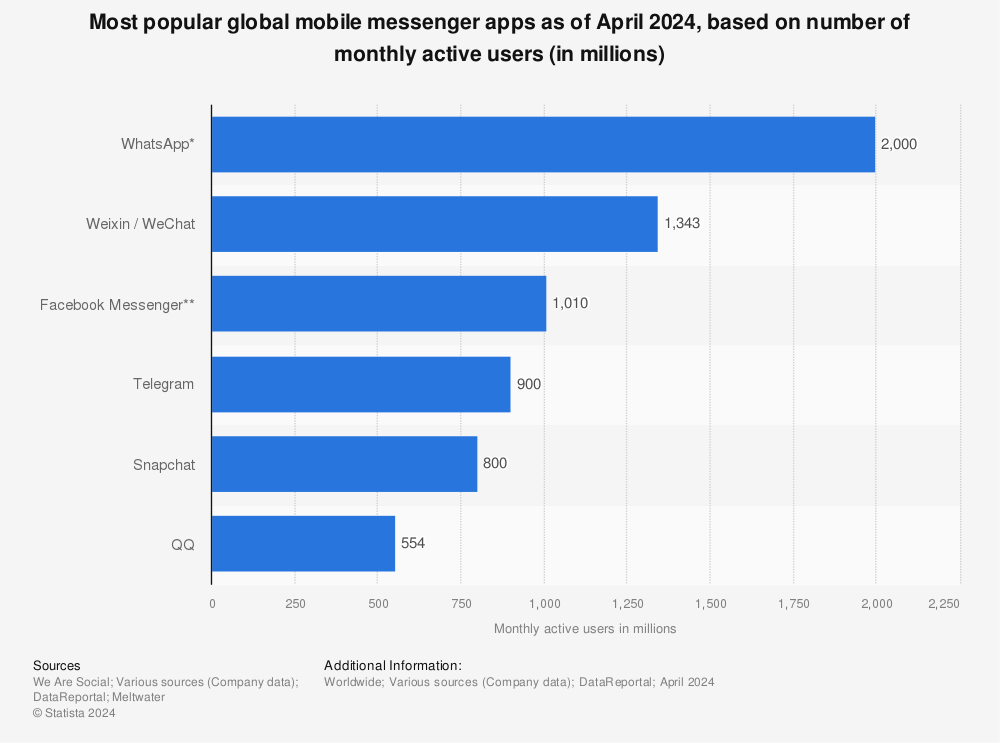Before a customer makes a purchase, there’s typically first a conversation about it. Often this is an internal dialogue justifying the purchase.
With conversational commerce, brands can become part of this conversation. Plus, with generative AI’s development, it’s a great time to see how you can incorporate conversational marketing into your strategy.
What Is Conversational Commerce?
Conversational commerce refers to the practice of businesses interacting with their target audience via:
- Messaging apps
- Chatbots
- Other types of voice technology like voice assistants
Behind this conversation, there can be a human representative or chatbot. A hybrid approach is also possible.
Where eCommerce generally relates to shopping via the internet, conversational commerce deals with shopping via messaging-type apps.
Types of Conversational Commerce
Here’s an overview of the main tools used for conversational commerce, along with examples of how brands are incorporating it.
1. Live chat
When visiting eCommerce websites, you’ll often notice a live chat button, usually in the bottom right-hand corner.

Source: mackweldon.com
If you don’t find such an option here, you can also refer to the customer service or contact pages. It’s sometimes listed here.

Source: sephora.com
For example, if you hop on over to Sephora’s customer service page, you’ll see the option to chat to a Beauty Advisor. It’s also listed in the footer area.

In many cases, it’s available 24/7. Though, that’s not always the case. For example, Sephora’s representatives are only available till 9 p.m. PT.

You can use live chat to engage with website visitors proactively and help move them further through the purchasing cycle.
It’s also a popular option for conversational commerce as answering customer questions doesn't take up too much of your staff's time. Based on data shared by Statista and LiveChat, a top-rated customer service tool, the average duration per chat is between 8 minutes and 33 seconds and 11 minutes and 53 seconds.
In addition, live chat allows one agent to carry out multiple simultaneous conversations without customers feeling like their concerns are being ignored. The vast majority of customers are satisfied with their live chat interactions, with LiveChat placing the customer satisfaction average per chat for a midsize US-based retail company at 86.2%.
2. Chatbots
Chatbots are similar to live chat (and generally found in the same place on websites). The main difference is that you use technology to do much of the work for you.
You can program chatbots for just about anything, from handling customer service requests to helping users complete a sale. You generally base them on keywords and use AI to create a conversational flow.
The versatility of chatbots means that you can use them to help move people through different stages of the purchasing cycle, perhaps even all the way from awareness to closing the sale. That said, a US survey completed in 2023 reveals that only a quarter of customers actually bought a product after interacting with a chatbot.
As with live chat, chatbots can chat with multiple people at once, making them an efficient way to disseminate information to potential clients. People typically don't mind having their questions answered by a chatbot, if it solves their problems quickly and it sounds sufficiently like a human. According to the Statista Research Department, in about 40% of the cases, eCommerce chatbots manage to answer shoppers’ questions perfectly.
3. Messaging apps
Messaging apps like WhatsApp, WeChat and Facebook Messenger are commonplace and widespread nowadays. In 2023, more than 1.5 billion consumers and companies used WhatsApp Business.

Source: statista.com
In terms of popularity, WeChat sits in second spot with 1.3 billion monthly active users, followed by Facebook Messenger with just over 1 billion.
Much of the appeal is because you can use these to exchange instant messages and engage in private conversation. While email can do that too, a survey revealed that 75% of smartphone users have listed chatting and sending messages as their most popular smartphone activity, followed by email.
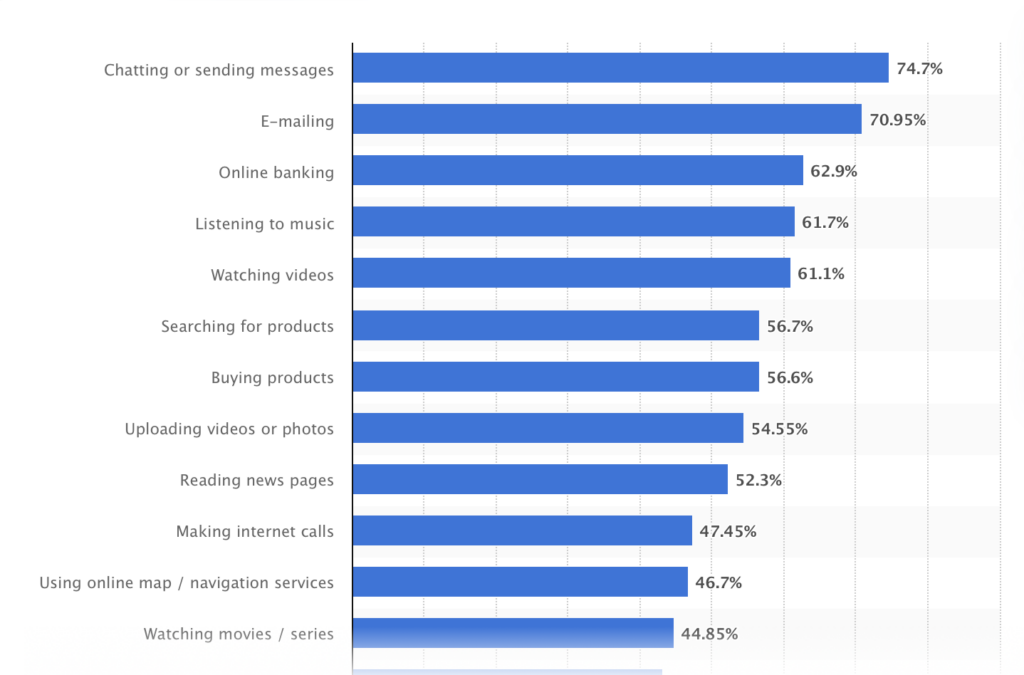
Combine this with the fact that searching for and buying products are also popular smartphone activities and using messaging apps for commerce is a logical move.
These apps are especially popular for customer service. A survey completed by Alana Chinn, senior marketing manager at HubSpot, reveals that 65% of consumers use social media messengers to contact customer service.
4. Voice assistants
Voice assistants need no real introduction. Millions of consumers are on a first-name basis with their voice assistants.
It’s predicted that by 2026 there will be more than 157 million voice assistant users in the United States alone.
In short, voice technology uses AI natural language processing technology to reply to voice commands across a range of devices. Using voice-activated services like Apple’s Siri or Amazon’s Alexa, customers can even make purchases.
The Rise and Popularity of Conversational Commerce
On January 16, 2015, Chris Messina, the inventor of the hashtag and Uber’s Developer Experience Lead at the time, is said to have coined the term when he wrote an article on Medium titled “Conversational commerce”. In this short blog post, he discusses a trend that he’s noticed, namely that a number of brands are taking more notice of communication technology.
He concluded this blog post by predicting that more service providers would use this type of technology and subtly integrate it into our lives.
A year later, he wrote a follow-up post in which he claimed that 2016 would be the year of conversational commerce.
One can’t help but wonder if he ever thought that it would become so popular. Fast-forward nearly 10 years and conversational commerce is showing no signs of slowing down.
According to data collected in We Are Social’s Digital 2024 April Global Statshot Report, chat and messaging is the main type of website and apps used. Just over 95% of internet users aged 16 to 64 have used chat and messaging apps in the past month, putting it slightly ahead of social networks. Only internet users aged 16 to 24 use social networks more often than chat messaging, and only by a fraction.
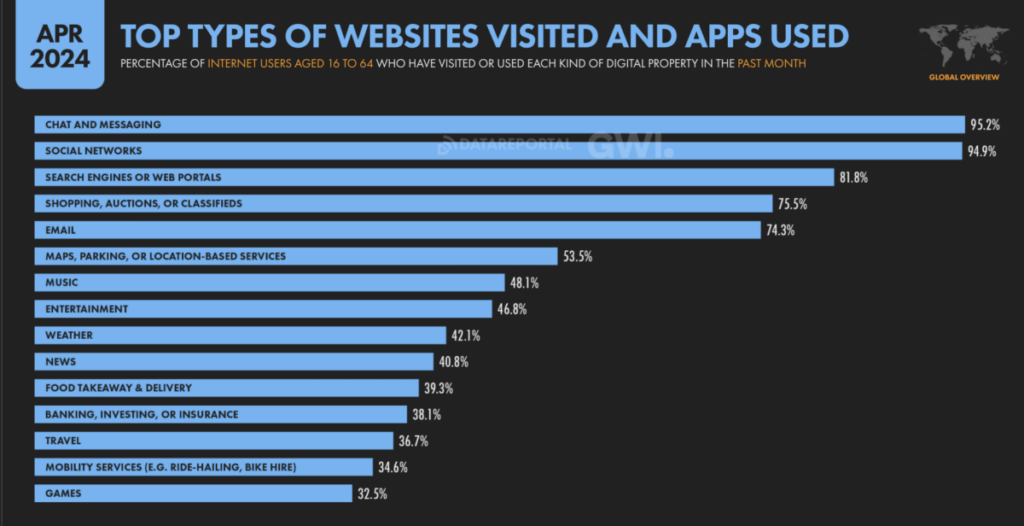
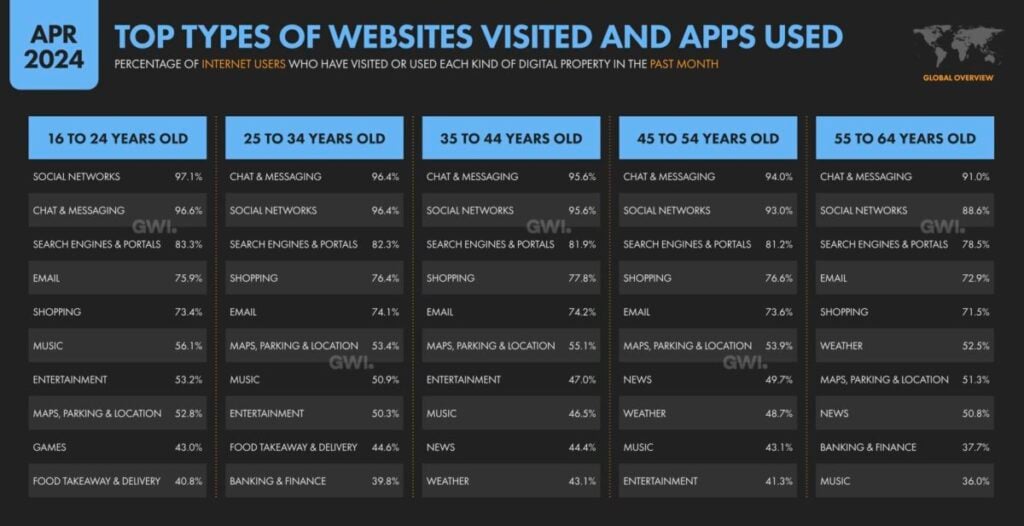
While not as popular as chat and messaging apps, about a third of internet users aged 16 to 64 use voice assistants each week.
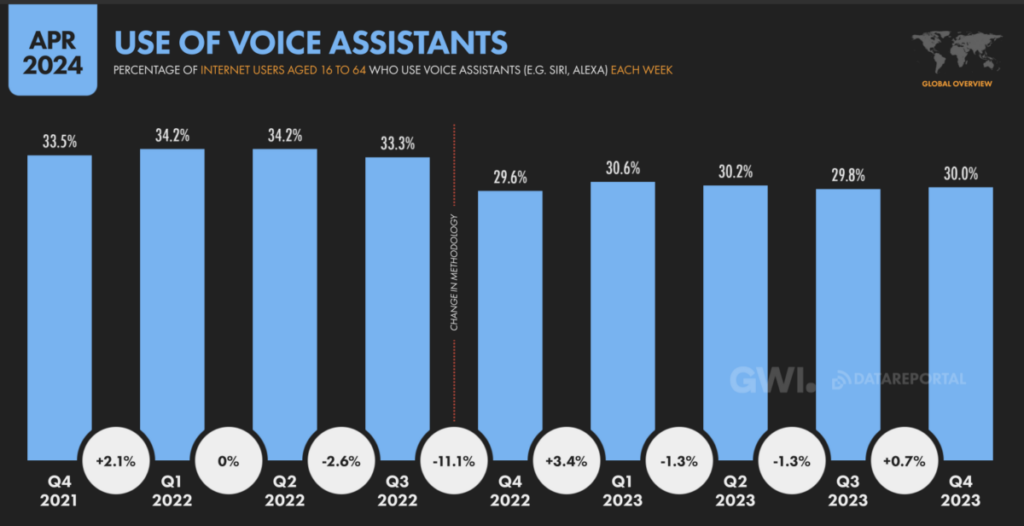
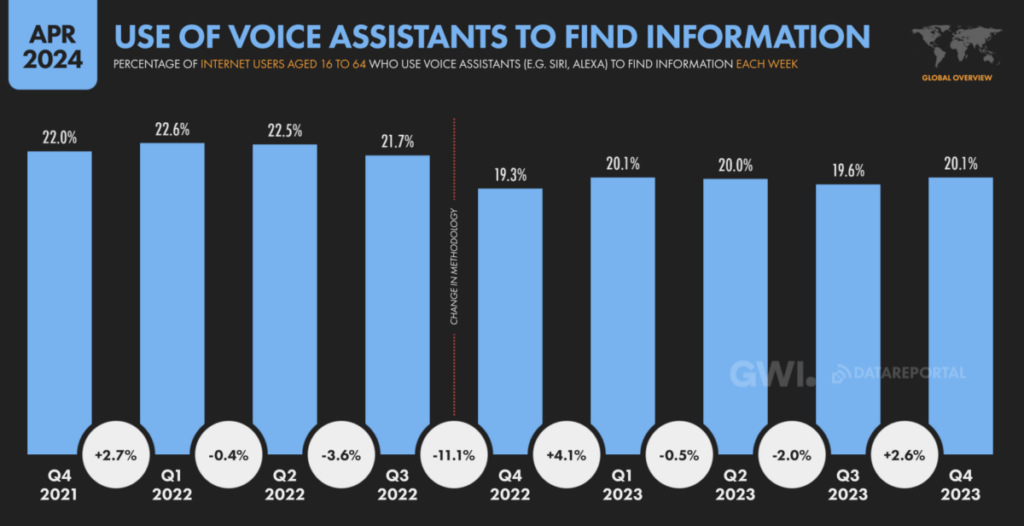
What’s more, EMARKETER predicts that the number of voice assistant users will grow by 3% each year till the end of 2027.
These numbers show that there’s immense potential in using chat and messaging features to reach your target audience. These are the places where they’re active.
What Are the Benefits of Conversational Commerce to Retailers?
While conversational commerce allows retailers to interact with a bigger audience, there’s more to it than reach. It can be used for specific activities like lead generation, upselling and cross-selling.
1. Assist with leads
Conversational commerce is a great lead generation tool. It’s an easy way for brands to ask users first to share their contact details (often under the guise of in case the conversation gets cut off).

Aside from helping with lead generation, it can also assist in closing leads.
Telephone calls can be uncomfortable; email replies can take long. With instant messaging, brands can answer potential customers' questions and move them through the purchasing cycle.
For example, they might use live chat or a chatbot to:
- Send customized greetings
- Offer expert advice
- Share discounts
- Highlight time-sensitive offers
KEEN Footwear has affectionately dubbed their chatbot Rover, a golden retriever that can “fetch” you basically anything. When a customer initiates a chat, discounts are one of the first prompts. It’s a great alternative to annoying popups to make customers aware of information that can help them to convert.
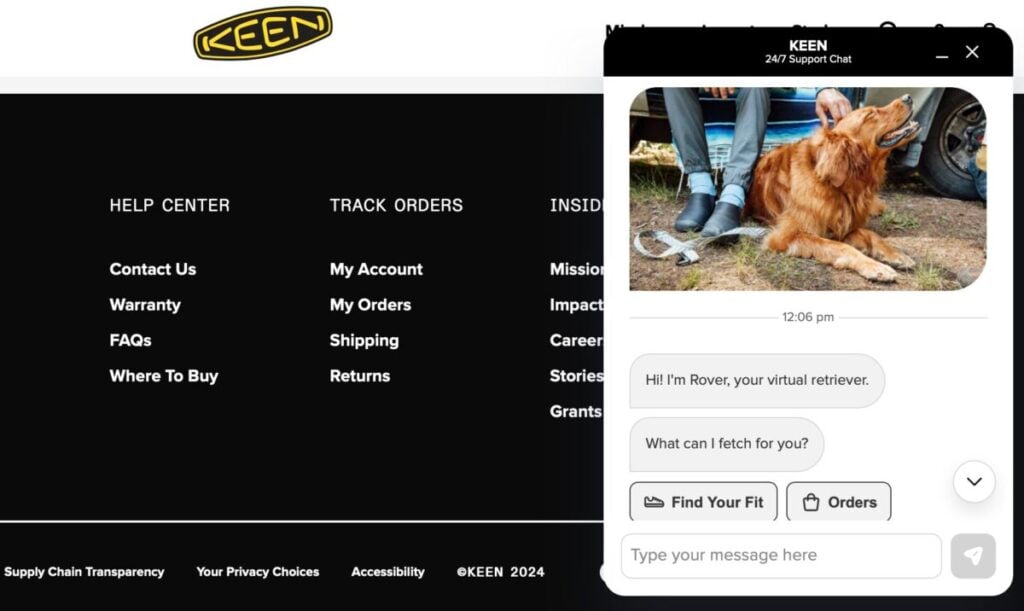
Source: keenfootwear.com
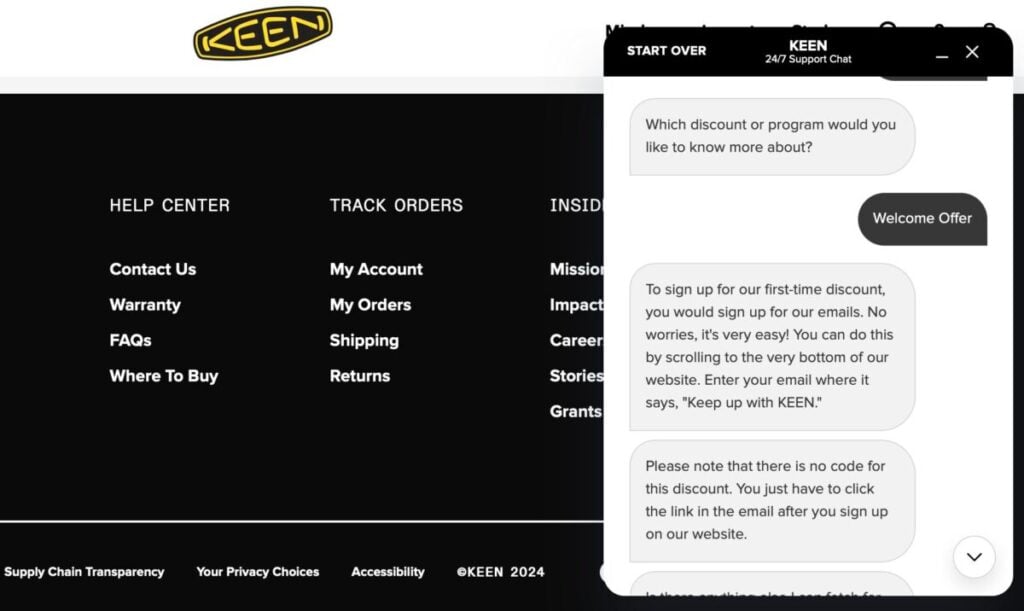
2. Increase the average order value (AOV)
Not only can conversational commerce help you with conversion, but it can also potentially increase the cart value. You can, for example:
- Use a chatbot to communicate with existing customers, suggesting how they could update their past purchases or buy some complementary products
- Use live chat to send personalized product recommendations
For example, one of the questions you can ask HUM Nutrition’s virtual assistant is “Which products can or cannot be combined?”. For a brand that sells nutritional supplements, it’s a clever way to address potential drug interactions, but at the same time presents a cross-selling opportunity.
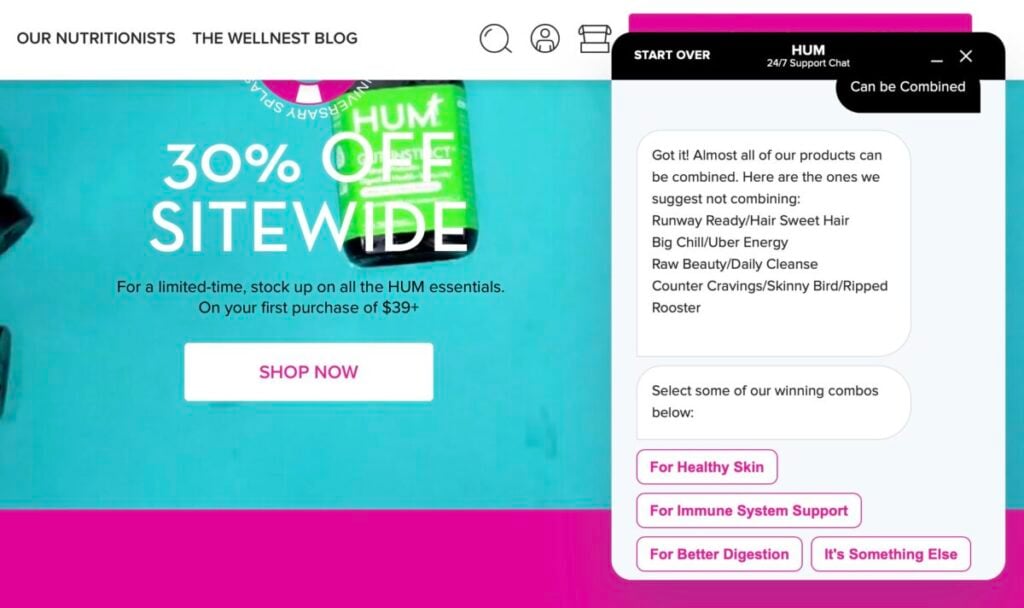
Source: humnutrition.com

Wine.com, for instance, uses live chat for product recommendations. What makes this use of conversational commerce even more effective is that recommendations are shared by actual wine experts that include professional winemakers, vineyard managers, sommeliers, and published wine writers. It’s a great way to humanize the online store and personalize the shopping experience at the same time.

Source: wine.com
3. Improve customer service
As mentioned earlier, customer service is one of the most popular use cases for conversational commerce. Not only does it allow you to offer round-the-clock support, but you can also quickly connect the customer with the relevant department.

Source: bloomingdales.com
For example, Bloomingdale’s uses Facebook Messenger to distinguish between online orders and in-store pickups to prioritize queries and direct them to the right person from the start.
What’s more, they also start a chat with a link to their FAQ page as another way to speed up customer service. This way they can resolve customer service issues that might previously have tied up customer service representatives for a disproportionately long time.
4. Gather feedback
Not only can you use tools like live chat or chatbots to gather contact details, but also feedback regarding their experience. It doesn’t need to be anything over the top. For example, LiveChat uses it to gather feedback about the actual chatbot experience as well as about its product.

Source: livechat.com
You’re far more likely to gather feedback from customers through a natural conversation (even if you're using a bot) than you are if you ask customers to fill in web forms.
Key Takeaways
Conversational commerce is becoming increasingly popular now that most people carry personal communications devices, such as smartphones. Combine that with AI developments and it presents a golden opportunity for dialogue between brands and their target audience.
However, customers are still on their guard when it comes to AI-powered conversational tools. When going this route, don’t ask them to share highly sensitive data, ensure that you test your voice bots, and upgrade your security measures. The experience needs to be user-friendly and secure. You don’t want to create the impression that the bot will take over their shopping cart, let alone the world.
Frequently Asked Questions
What is the difference between social commerce and conversation commerce?
Conversational commerce uses tools like Facebook Messenger and WhatsApp to help with customer service and shopping-related tasks. On the other hand, social commerce focuses on sales. It uses various social media platforms like Instagram, TikTok, and Facebook to sell products.
How do you start with conversational commerce?
To get started with conversational commerce, follow these essential steps:
- Identify which platform do you want to use (for example, Facebook Messenger or WhatsApp)
- Decide on which questions your chatbot/live agents will answer and which type of language and tone they should use
- Create a conversational flow
- Train and test your chatbot/live agent
What’s important when using conversational marketing?
To be successful at conversational marketing, you need to:
- Add personalization without overdoing it
- Time your advice right
- Keep the conversation as natural as possible
- Integrate your chatbot or messaging app seamlessly into the customer’s journey
Which tools can help you to use WhatsApp for conversational marketing?
You can use a WhatsApp chatbot tool like:
- Agentbot
- MessengerPeople
- Botsociety
- LivePerson
- Engati
- Freshworks
- SendPulse
How do you choose the best conversational AI software?
When searching for a conversational AI tool, ask the following questions:
- Can it make sense of and process complex customer queries?
- Can it adapt to changing contexts?
- How accurately does it respond?
- Does it integrate with my existing systems?
- Can it scale to accommodate growth?
- Does it comply with industry regulations?
- What is its response speed?
- Does it offer an enjoyable user experience?
